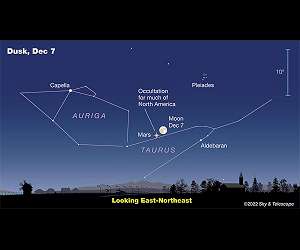The English poet William Blake famously implored readers to “see the world in a grain of sand.” In Physics of Fluids, by AIP Publishing, scientists from the University of Campinas, in Brazil, and the University of California, Los Angeles, have been doing just that – studying the “granular” dynamics of how crescent-shaped sand dunes are formed.
Known as barchans, these formations are commonly found in various sizes and circumstances, from finger-length dunes on the ocean floor, to stadium-sized dunes in the Earth’s deserts, to dunes that extend for a kilometer across the surface of Mars.
Until now, however, there has been a glaring lack of grain-scale computations of the growth and evolution of barchan dunes.
“In nature, these dunes may take years to form on Earth, or thousands of years to evolve on Mars, so typically, over the last few decades, numerical simulations have been conducted at large scales,” said co-author Erick Franklin. “Computations tracking each grain were almost impossible. Our results show how to carry out computations to resolve, at the same time, the morphology of barchans, the grains’ motion, and details of the fluid flow that influence the forces on each grain.”
Using a CFD-DEM (computational fluid dynamics/discrete element method) approach, Franklin and his colleagues carried out simulations by applying the equations of motion to each grain in a pile being deformed by a fluid flow.
“We explored the different parameters involved in the numerical computations by performing exhaustive simulations using small dunes in aquatic environments and comparing them with experiments. We showed the ranges of values for the proper computation of barchan dunes down to the grain scale,” said Franklin. “This study helps pave the way for further investigating the transmission of forces within the dunes and the motion of grains – and for scaling up the subject so that larger dunes can now be investigated using high computational power.”
Indeed, while Martian and terrestrial barchans influenced by wind occur on much larger time and length scales compared to aquatic cases, which occur in a matter of minutes and centimeters, they share many similar dynamics.
“With our results, research groups can now employ large computational resources to simulate barchans elsewhere that take place over decades or millennia,” said Franklin. “This is relevant to geophysicists, hydrologists, climate scientists, and engineers, as it will help accurately predict the future of barchan fields on Earth and Mars and provide an account of their histories.”
Research Report:Grain-scale computations of barchan dunes
Related Links
American Institute of Physics
Mars News and Information at MarsDaily.com
Lunar Dreams and more
|
We need your help. The SpaceDaily news network continues to grow but revenues have never been harder to maintain. With the rise of Ad Blockers, and Facebook – our traditional revenue sources via quality network advertising continues to decline. And unlike so many other news sites, we don’t have a paywall – with those annoying usernames and passwords. Our news coverage takes time and effort to publish 365 days a year. If you find our news sites informative and useful then please consider becoming a regular supporter or for now make a one off contribution. |
||
|
SpaceDaily Contributor $5 Billed Once credit card or paypal |
SpaceDaily Monthly Supporter $5 Billed Monthly paypal only |
|

![]()
Mars set to wink out behind the Moon
Washington DC (SPX) Dec 05, 2022
On the night of December 7-8, Mars will be at opposition – opposite the Sun’s position in the sky. On that date, Earth is situated directly between Mars and the Sun. The planet is at its brightest, rising as the Sun sets and setting as the Sun rises. Opposition and closest approach to Earth, however, are offset by several days due to the relative shape and orientation of each planet’s orbit. Mars and Earth were closest on the night of November 30-December 1 when they were separated by 81.5 million kilom … read more